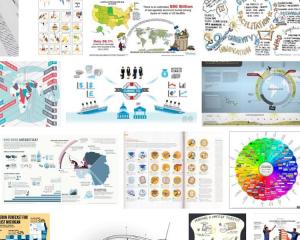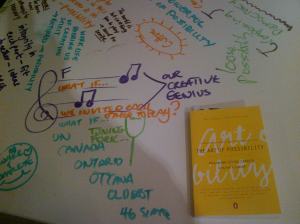[youtube=http://www.youtube.com/watch?v=Fu1C-oBdsMM]
When I wrote, “That Awkward Personal Branding”, I referenced the bright side of an online persona. The way it can work to your advantage if you are honest and polite. Being present online can get you a new job, an informal or formal education, a new profession; it can introduce you to interesting and bright people. What was not explored was that sometimes there is a downside to being online or at least that some caution is required. I had a different post lined up for this week, but then I had some interesting conversations and when I ran across the video above, I decided to write this post instead. The TED video provides some brilliant insight on the reality of our online lives and I thought I should share it and some of my own perceptions.
I grew up in a large and extended West Indian family and it always struck me as uncanny how my aunts in Montreal could know what my cousins in Barbados were doing at any given time and vice versa. The family grapevine was fast, effective and efficient. You couldn’t blink without it being recorded, shared and discussed. It was therefore always a bit of a challenge to me to try to operate under the radar. Doing something, anything, and keeping it a secret was an accomplishment. It’s not that I was doing anything nefarious, questionable or even interesting. It’s simply that when it seems as if every waking moment of your life is constantly being transmitted through the world’s most well-organized grapevine, you learn to appreciate privacy.
Given that background, you can imagine that when Facebook first emerged, it gave me nothing less than the creeps. It felt very much like a self-inflicted Big Brother scenario. Why would anyone want everyone knowing their activities? I watched with some amazement as people I knew and respected posted pictures and particulars about things that would have been better kept discreet or at least offline. In a professional capacity, I have quietly scooped up and destroyed compromising photos of colleagues that would have devastated even the best careers. I have cringed when friends have posted highly political commentary and have blasted my son on more than one occasion for inappropriate posts from him and his friends.
So having said that, why would I ever encourage anyone to be online or promote themselves online? The answer is that social media is a reality. It’s not going to fade away and become a distant memory. For good or bad, it’s part of our culture and imbedded in the way we communicate, so use it. Engage but be strategic about it. If you were remembered for one thing, would you want that comment you recently made on Facebook or LinkedIn to be it? Would you be all right sharing your online comments with your boss, your mother or religious leader? If the answer is no, then you may want to rethink what you post. Your digital trail is forever, so make each forever footprint with care.
Generational differences mean that my children and even those ten or fifteen years younger than me are comfortable posting things I wouldn’t dream of sharing. When you grow up in the shadow of Facebook and the internet, your perception of what is private is very narrow, but it shouldn’t be taken for granted. Provocative language, heavily loaded double entendres and sexually suggestive witticisms are brilliant repartee at the dinner party table, but not necessarily, what you want to put out there for potential employers or clients. Most of the cues that are present in real life exchanges are missing online. The sarcastic tone, the raised eyebrow or the knowing smirk that put a different meaning on words are all absent in online exchanges. You never assume in communications. You always act with the expectation that your audience will need specificity, transparency and information. If you know that the majority of messages are delivered through non-verbal cues, then you understand that when you engage online you are always communicating at a disadvantage. In this setting clarity becomes king.
A very smart businessperson recently asked me, “Would you rather be on record online as a new Plato, Cicero or Voltaire or a Dr. Ruth or Pamela Anderson?”
While I don’t expect to reach the intellectual heights of the first three, reason, if not experience, would have me avoid the pitfalls of the last two. Dr. Ruth for the focus of her conversation and Pamela for her illustration of the same. I have other ideas to explore. To that end, I would encourage caution when managing your online persona. Engage and be present, post and share your ideas. Take advantage of the benefits that online life has to offer, and there are many, but always ask yourself, would I be comfortable with everyone in my life seeing what I wrote and is this how I want to be remembered?
Related articles
- Clean Up Your Online Footprint (Blue Sky Resumes)
- Social Media Footprint: How Much Can We Learn About One Another Online? (sociableblog.com)










